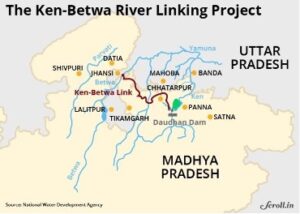9 October 2023 : Daily Current Affair
Daily Current Affairs
9-October-2023
1. Israeli air strikes pound Gaza as death toll climbs.
Topic: GS2 – International events.
Context:
- Hamas fighters carried out a deadly attack in Israeli towns, resulting in the deaths of 600 people and the abduction of dozens.
- In retaliation, Israel launched air strikes in Gaza, targeting housing blocks, tunnels, mosques, and Hamas officials’ homes, resulting in over 370 deaths, including 20 children.
Emergence of recent Israel Palestine conflict:
The recent Israel-Palestine conflict in October 2023 emerged from a number of factors, including:
- The ongoing Israeli occupation of the Palestinian territories, which has been in place since 1967.
- The continued expansion of Israeli settlements in the Palestinian West Bank, which are considered illegal under international law.
- The blockade of the Gaza Strip, which has been imposed by Israel and Egypt since 2007 and has caused a humanitarian crisis in the Strip.
- The rise of right-wing extremism in both Israel and Palestine.
In the immediate lead-up to the conflict:
- On October 7, 2023, Palestinian militant groups led by Hamas launched a large-scale offensive against Israel from the Gaza Strip. The offensive included rocket attacks on Israeli cities and towns, as well as infiltration attempts by Palestinian militants.
- Israel responded to the offensive with airstrikes on the Gaza Strip and a ground invasion of the territory. The fighting lasted for several days and resulted in the deaths of hundreds of people, including civilians.
2. What caused the flood in Sikkim?
Topic: GS3 – disaster management
Context:
- A glacier-lake outburst flood (GLOF) occurred in Sikkim on October 4, resulting in over 25 confirmed deaths and significant damage.
Glacier-lake outburst flood (GLOF):
- GLOFs are caused by the sudden release of water from glacial lakes formed by the melting of glaciers, often due to the breaking of natural dams called moraines.
- Sikkim has a large number of glaciers, and climate change has been linked to the increased risk of GLOFs in the region.
- The trigger for the Sikkim GLOF event is uncertain, with some speculating that heavy rainfall, earthquakes in Nepal, or other factors may have played a role.
Destruction in Sikkim due to floods:
- The flood led to the destruction of the Chungthang dam, affecting the Teesta 3 hydropower project and other hydropower projects along the Teesta River.
- Infrastructure, bridges, houses, and pipelines were also severely damaged in the affected districts.
- Experts warn that the frequency and severity of GLOF events in the Himalayas are likely to increase in the future due to climate change, making early warning systems and coordinated planning crucial for risk mitigation.
Question: Discuss the causes, impact, and mitigation strategies for glacier-lake outburst floods (GLOFs) in the Himalayan region, with a focus on the recent GLOF event in Sikkim.
3. How the Digital India Act will shape the future of the country’s cyber landscape
Topic: GS3 – disaster management
Key provisions of the Digital India Act 2023 (DIA):
- Online safety and trust:The DIA places a strong emphasis on online safety and trust, with a commitment to safeguarding citizen’s rights in the digital realm while remaining adaptable to shifting market dynamics and international legal principles.
- New-age technologies:The DIA provides guidelines for the responsible utilisation of new-age technologies such as artificial intelligence and blockchain. Through this, it aims to not only encourage the adoption of these technologies but also to ensure that their deployment is in line with ethical and legal principles.
- Open internet:The DIA upholds the concept of an open internet, striking a balance between accessibility and necessary regulations to maintain order and protect users.
- Know Your Customer (KYC) requirements:The DIA mandates stringent KYC requirements for wearable devices, accompanied by criminal law sanctions.
- Review of the “safe harbour” principle:The DIA contemplates a review of the “safe harbour” principle, which presently shields online platforms from liability related to user-generated content, indicating a potential shift in online accountability standards.
Concerns
- Impact on innovation and ease of doing business:Stricter regulations, particularly in emerging technologies, could inadvertently stifle entrepreneurial initiatives and deter foreign investments.
- Freedom of expression:The review of the “safe harbour” principle could lead to a more cautious approach among online platforms, possibly impinging on freedom of expression.
- Effective enforcement:The DIA’s success hinges on effective enforcement, which will require substantial resources, expertise, and infrastructure.
- Balancing interests of stakeholders:Balancing the interests of various stakeholders, including tech giants, while ensuring the protection of citizen rights, poses a significant challenge.
Conclusion
The DIA is a crucial step towards ensuring a secure, accountable, and innovative digital future for India. It represents a forward-looking approach to regulation in an age of constant change and has the potential to shape the country’s digital landscape for generations to come.
Question: Critically analyze the key provisions and potential implications of the Digital India Act 2023 (DIA), highlighting the challenges and opportunities it presents for India’s digital ecosystem.
4. ISRO performs trajectory correction for Aditya-L1
Topic: GS3 – Science and technology
Context:
- ISRO performed a trajectory correction manoeuvre on the Aditya-L1 spacecraft.
- The manoeuvre took place on October 6, 2023.
- The spacecraft is in good condition and on its way to the Sun-Earth L1 point.
About Aditya-L1:
- Aditya-L1 is India’s first solar observatory, designed and developed by the Indian Space Research Organisation (ISRO). It was launched on September 2, 2023, and is currently en route to its final orbit around the Lagrangian point 1 (L1) between the Earth and the Sun.
- Aditya-L1 is equipped with seven scientific payloads that will study the Sun’s atmosphere, corona, and solar wind. The payloads will collect data on a variety of solar phenomena, including solar flares, coronal mass ejections, and the solar cycle.
- The data collected by Aditya-L1 will help scientists to better understand the Sun’s behavior and its impact on Earth and the solar system. This knowledge could be used to develop improved methods for predicting and mitigating space weather events, which can have a significant impact on power grids, satellites, and other critical infrastructure.
- Aditya-L1 is a significant milestone in India’s space program and a valuable contribution to global solar research. It is expected to provide new insights into the Sun and its impact on our planet for many years to come.
5. Prey base, habitat dictate Asiatic wild dog-tiger coexistence: study
Topic: GS3 – environmental conservation
What is in the news:
- A new study explores the coexistence of dholes (Asiatic wild dogs) and tigers in the Manas National Park in Assam, India.
- Dholes are an endangered species, and the study aimed to understand their habitat use and factors influencing coexistence with other carnivores.
- The study found a positive association between dholes and tigers, challenging the assumption of antagonistic interactions.
- Factors such as overlapping prey availability or habitat suitability may facilitate this positive relationship.
- The study suggests further research to understand the mechanisms underlying this coexistence.
6. Unravelling the links between consanguinity and genetic diseases.
Topic: GS3 – Science and technology
Links between consanguinity and genetic diseases:
- Consanguinity, the practice of marrying close relatives, is still prevalent in some human societies, especially in Asia and West Africa.
- It has shaped both cultural and genetic aspects of human history, leaving an impact on genetic vulnerabilities.
- Scientists have studied the levels of inbreeding in various populations and have identified groups with high genetic relatedness.
- Consanguinity can lead to an increase in mortality and the rate of recessive genetic diseases in populations.
- While consanguinity is undesirable among humans, it is used in breeding plants and animals to eliminate deleterious genetic alleles.
- Ancient populations may have experienced evolutionary bottleneck events and consanguinity, which could have contributed to human traits and diseases.
- Molecular measures like runs of homozygosity are used to understand the genetic history of populations and identify genetic diseases.
- The relationship between consanguinity and complex diseases like type-2 diabetes is still under investigation.
- Advances in genomics research may lead to innovative solutions to mitigate the risks associated with consanguinity and improve health outcomes through personalized medicine and genetic diagnostics.
7. Aditya-L1 corrects trajectory as it moves closer to Sun: why, how this was done
Topic: GS3-Science and Tech
Context:
- The Indian Space Research Organisation (ISRO) announced that it had carried out a Trajectory Correction Maneuver (TCM) for the Aditya-L1 spacecraft, to ensure it reaches its destination at the Sun Earth Lagrangian point 1.
Why is TCM necessary?
- ISRO scientists had indicated that a TCM would be necessary for Aditya-L1 soon after the spacecraft began its journey toward the L1 point on September 19, after orbiting the earth for 17 days.
- Unlike lunar missions, which take about three weeks to cover the 384,400 km distance to the Moon, deep space missions to Mars (distance of 225 million km) and the Lagrangian Point 1 (distance of 1.5 million km) take several months (Mars around 11 months and L1 around four months)
- The longer distances require the mission to incorporate trajectory correction plans using orbit determination calculations, to ensure the spacecraft remains on the right course towards its destination.
What are Trajectory Correction Maneuvers?
- The Aditya L1 spacecraft is to be injected into an orbit around L1. For this to be achieved, the spacecraft has to travel on a planned trajectory.
- After the Trans Lagrangian Point 1 Insertion manoeuvre on September 19, scientists found that there could be trajectory errors that would need correction.
- There is a provision in the mission for this sort of manoeuvre, which is called a trim manoeuvre.
- Smaller corrections involve firing of engines on the spacecraft for shorter durations, which results in conserving of fuel while bigger corrections need longer firing of the engines.
When has ISRO performed TCMs in the past?
- The manoeuvres are required only in deep space missions.
- The Mars Orbiter Mission witnessed three TCMs.
- The manoeuvres were carried out to ensure that the Mars Orbiters attained the right trajectory to reach a distance of 500 km (plus or minus 60 km) from the Red Planet.
- If the correction manoeuvres were not carried out, the spacecraft would have reached a distance of 723 km periapsis (the point in the path of an orbiting body at which it is nearest to the body that it orbits).
8. The Yom Kippur War
Topic: Prelims
Context:
- The Surprise attack by Hamas on Israel has brought back memories of the Yom Kippur war, which reset equations in West Asia.
What was the Yom Kippur war?
- The Yom Kippur war was fought between Israel on one side and Egypt and Syria on the other, from October 6 to 25, 1973.
- It is also called the Fourth Arab-Israeli war, coming after three wars in 1949, 1956, and 1967.
Why is the current violence being compared to the Yom Kippur war?
- Firstly, this has been the deadliest attack on Israel since the Yom Kippur war.
- The second similarity is the criticism within Israel for the state being found unprepared.
- The attack on Saturday came as a surprise, despite Israel’s advanced intelligence and interception systems.
- While the 1973 war came on Yom Kippur, Saturday’s attack came when many Israelis were preparing to observe Simchat Torah, which marks the end of the annual cycle of public Torah readings, and the beginning of a new one.
- The Torah constitutes the first five books of the Hebrew Bible.
9) India-Israel Relations
Topic: GS2-IR
Context:
- As Hamas, the militant group ruling the Gaza Strip, mounted one of the most audacious attacks on Israel, many have called it the worst inside the Jewish state’s territory since its creation in 1948.
- Prime Minister Narendra Modi expressed shock at what he called “terrorist attacks” and conveyed “solidarity with Israel”.
About India- Israel relations
- 1990: Though India recognized Israel in 1950, normalization took another 4 decades. This was aided by the weakening of Arab support to Palestine. This improved further after the break-up of the Soviet Union.
- 1992: While there were defense deals and cooperation in S&T and agriculture, India balanced its ties with its historical support for the Palestinian cause, its dependence on the Arab world for oil, and the pro-Palestinian sentiments of the country’s Muslim citizens.
- 2000:L K Advani became the first Indian minister to visit Israel. The same year, Foreign Minister also visited Israel. The two countries also set up a joint anti-terror commission in that year.
- 2003:Ariel Sharon became the first Israeli Prime Minister to visit India.
- 2017: The year marks the first visit of the Indian Prime minister to Israel. With Abrahamic accords in 2020, UAE, Sudan, Bahrain, and Morocco normalized relations with Israel. This has made India more confident of its relations with Israel.
Military ties and the Kargil war
- The establishing of full diplomatic ties with Israel came in especially handy during the Kargil conflict in 1999.
- The Indian Air Force desperately needed precision target bombs as Pakistani intruders were hiding in caves and bunkers atop mountains in Kargil.
- The IAF reached out to their Israeli counterparts, who wasted no time.
- They are understood to have dug into their emergency stockpiles and shipped the weapons to India, which proved to be decisive in the hour of need.
11.1,851 agriculture and rural development banks to be computerized
Topic: GS2-Govt policies
Context:
- The Centre has approved an initiative aimed at computerising and empowering the registrars of all 28 states and 8 union territories as well as 1,851 Agriculture and Rural Development Banks (ARDBs) operating across 13 states.
Details:
- The initiative has been approved by the Ministry of Cooperation.
- A Central Project Monitoring Unit (PMU) will be established for this scheme, which will work towards the successful implementation of the scheme.
12. Ken-Betwa river linking
Topic: Geography
Context:
- The Ken-Betwa Link Project (KBLP) secured the final forest clearance, six years after it got the provisional nod.
Background:
- The government had developed an ambitious plan for the interlinking of rivers in order to alleviate the water shortage difficulties afflicting many regions of the nation.
- One of the first river interlinking projects to be executed in India is the Ken-Betwa link project, which is one of the National Perspective Plan’s (NPP) objectives.
- This project seeks to increase potable water supply, offer yearly irrigation for almost 10 lakh hectares throughout the states of Madhya Pradesh and Uttar Pradesh, and produce 103 MW of hydropower in the Bundelkhand region.
- One of the 30 river interlinking projects that have been proposed around the nation is the Ken Betwa river project.
About The Project
- In order to irrigate agricultural land and provide drinking water to the Bundelkhand region, the Ken-Betwa river interlinking project will join the two rivers and transport water from one to the other.
- The construction of the ‘Daudhan dam’ on the Ken River in the Panna Tiger Reserve in Madhya Pradesh’s Chhatarpur district would take eight years.
- A canal is anticipated to run from this point via the districts of Tikamgarh and Chattarpur in Madhya Pradesh and Jhansi in Uttar Pradesh, transporting water from the Ken to the Betwa river.

Potential advantages of the project:
- The Ken Betwa connection project is designed to serve multiple purposes, including better using available water resources and solving water scarcity in various Bundelkhand region locations.
- Recurrent droughts are common in the area, which has had an effect on socioeconomic growth. Furthermore, the area does not have abundant groundwater because of the hard rock and marginal alluvium landscape. As a result, the Ken Betwa river project will aid in harnessing monsoon floodwater and stabilising the supply of water during dry months, particularly in drought years.
- Additionally, annual irrigation and hydropower generation will be provided by the project connecting the Ken and Betwa rivers. In the Bundelkhand region, up to 62 lakh people would also benefit from the project’s increased drinking water supply.
- According to reports, the project will annually irrigate 10.62 lakh hectares of land, produce 103 MW of hydroelectric power, 27 MW of solar power, and provide drinking water to around 62 lakh people.
Concerns Raised:
Environmental impact of the Project is a source of worry.
- Several groups, including the panel chosen by the Supreme Court, have expressed concern over the proposal.
- Concerns have been raised by environmentalists about the effects it will have on the Panna Tiger Reserve. Due to the construction taking place inside the national park, about 46 lakh trees are probably going to be cut down.
- As part of the Ken Betwa river interlinking project, 6,017 hectares of forest area are anticipated to be flooded beneath the Daudhan dam of the KBLP.
- Numerous wildlife species that are seriously endangered can be found at Panna Tiger Reserve. Along with endangered vulture species like the white-rumped vulture, it is home to more than 52 tigers.
- For the project, an estimated 4.6 million trees would be felled, which will have a negative impact on rain in the already parched Bundelkhand region.
For Enquiry

9 October 2023 : Daily Current Affair

9 October 2023 : The Hindu Editorial Notes PDF

7 Oct 2023 : Daily Quiz

7 Oct 2023 : Daily Answer Writing

7 Oct 2023 : Indian Express

7 Oct 2023 : PIB

7 October 2023 : Daily Current Affair

7 October 2023 : The Hindu Editorial Notes PDF

6 Oct 2023 : Daily Quiz

6 Oct 2023 : Daily Answer Writing
Daily Current Affairs 9 October 2023 : Daily Current Affair Daily Current Affairs
9-October-2023
1. Israeli air strikes pound Gaza as death toll climbs.
Topic:…
October 2023 The Hindu 9 October 2023 : The Hindu Editorial Notes PDF The Hindu Editorial
9-October-2023
1. A census for a new deal.
Topic: GS2 – Indian polity
Context:
Caste…
Daily Quiz 7 Oct 2023 : Daily Quiz 7 Oct 2023 : Daily Quiz…
mains answer writing 7 Oct 2023 : Daily Answer Writing Mains Answer Writing
7-october-2023
Q1) The collective strength of BRICS nations allows for meaningful…
Indian Express 7 Oct 2023 : Indian Express Indian Express
7-October-2023
1) RBI’s MPC Meet
Context:
The Reserve Bank of India (RBI) has released…
October 2023 PIB 7 Oct 2023 : PIB PRESS INFORMATION BUREAU
7-Oct -2023
1. Bureau of Indian Standards conducts 1176 exposure visits for…
Daily Current Affairs 7 October 2023 : Daily Current Affair Daily Current Affairs
7-October-2023
1. Nobel Peace Prize 2023 goes to jailed Iranian activist Narges…
October 2023 The Hindu 7 October 2023 : The Hindu Editorial Notes PDF The Hindu Editorial
7-October-2023
1. Aligning higher education with the United Nations SDGs
Topic:…
Daily Quiz 6 Oct 2023 : Daily Quiz 6 Oct 2023 : Daily Quiz…
mains answer writing 6 Oct 2023 : Daily Answer Writing Mains Answer Writing
6-october-2023
Q1) In the context of India, despite the presence of constitutional…


